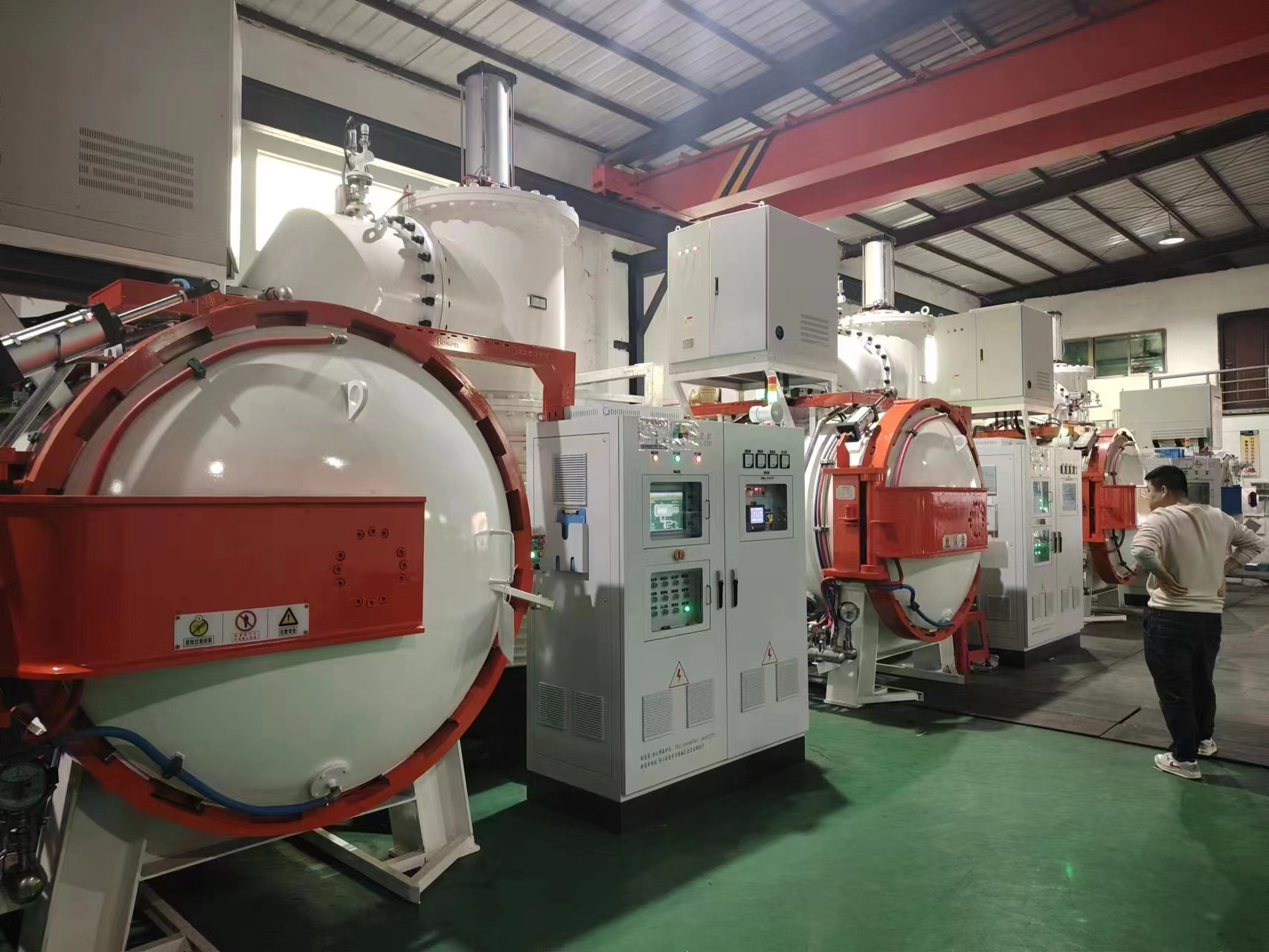Vacuum sintering furnace selection guide
May. 21, 2024
1.Advantages of vacuum sintering
1.1 Under vacuum sintering conditions, it is easy to control the carbon content of the alloy.
At the sintering temperature, the pressure in the furnace is only tens of Pascals (Pa) or even lower. There are very few O2, N2, H2 and H2O molecules. Many reactions can be ignored and the influence of the medium is very small. As long as the dewaxing process is strictly controlled, the carbon content of the alloy changes very little during the vacuum sintering process, and the properties and structure are quite stable.
1.2 Under vacuum sintering conditions, the purity of cemented carbide can be improved.
Vacuum sintering is conducive to the reduction of metal oxides; there is no need to open the furnace door during the entire sintering cycle, no air enters, and almost no reactions involving N2 and O2 occur.
1.3 Under vacuum sintering conditions, less impurities are adsorbed on the surface of the hard phase, which improves the wettability of the hard phase and improves the strength of the alloy, especially the TiC-containing alloy.
1.4 Under vacuum sintering conditions, the process operation is simple.
Since fillers are not required during vacuum sintering, this not only simplifies the operation, but also avoids the adverse effects of fillers on the surface of the sintered body.
1.5 The integration of dewaxing and sintering can reduce product oxidation and reduce the difficulty of carbon control; reduce the equipment footprint and reduce labor intensity.
1.6 Multi-atmosphere dewaxing-sintering integration can control the temperature, atmosphere and furnace pressure separately in different temperature sections. It can realize isothermal sintering (heat preservation) at any temperature and complete multiple functions, such as gradient alloy sintering.
1.7 Vacuum sintering can reduce the contamination of materials by harmful components in the atmosphere (water, oxygen, nitrogen and other impurities, etc.) and avoid a series of reactions such as decarburization, carburization, reduction, oxidation and nitriding. The vacuum environment is not available in other sintering forms (when the vacuum degree in the furnace reaches 1.3*10-1 Pa, the remaining gas in the furnace is equivalent to argon with a purity of 99.99987%).
1.8 Vacuum sintering can completely eliminate the particle oxide film before the material appears in the liquid phase, thereby improving the wettability of the carbide phase in the liquid phase, improving the alloy structure, and improving the alloy performance.
1.9 Due to the reduction in the amount of gas in the pores of the compact in a vacuum environment, gas products are more easily discharged from the pores and the gas dissolved in the metal is removed, making the material denser.
1.10 Vacuum sintering can make the material more wear-resistant and stronger.
1.11 Vacuum sintering also has a significant effect on reducing product costs.
2. Uses and classification of vacuum sintering furnaces
Vacuum sintering furnaces are mainly used for sintering powder metallurgy products, metal injection molded products, stainless steel bases, cemented carbide, super alloys, high specific gravity gold, ceramic materials, magnetic materials, neodymium iron boron, etc.
There are two main classifications of vacuum furnaces: the first is divided into ordinary sintering furnaces (1300℃ and below), medium-temperature sintering furnaces (1300℃~1600℃), and high-temperature sintering furnaces (1600℃~2400℃) based on temperature. The second type is divided by the degree of vacuum, which can be divided into low vacuum, high vacuum and ultra-high vacuum sintering furnaces.
3. How to choose a vacuum sintering furnace
When using a vacuum furnace to work, the most important thing is to heat. The heating rate is required to be fast during the heating process. The heating material selected must ensure good thermal conductivity and cannot produce deformation and large heat loss at high temperatures. During use, it is also necessary to ensure that the performance is stable for a period of time. When selecting the heating element, you should also handle the chemical properties of the product according to your needs, so as to avoid the material of the heating element affecting the quality of the workpiece. Therefore, the heating element should be selected reasonably.
The heat shield is the main component of the vacuum furnace heating chamber. Its main function is to insulate, maintain heat and reduce heat loss. It is also the structural basis for fixing the heater. Therefore, the structural form and material selection of the heat shield have a great impact on the power and performance of the vacuum furnace (such as vacuum degree, outgassing rate, etc.).
Heat shields are basically divided into two categories: metal heat shields and non-metal heat shields. The selection of heat shields is mainly determined based on the sintering temperature, the physical and chemical properties of the product and the vacuum requirements. Compared with thermal insulation components made of other materials, components produced using tungsten and molybdenum materials have better heat protection and can block heat convection more effectively.










